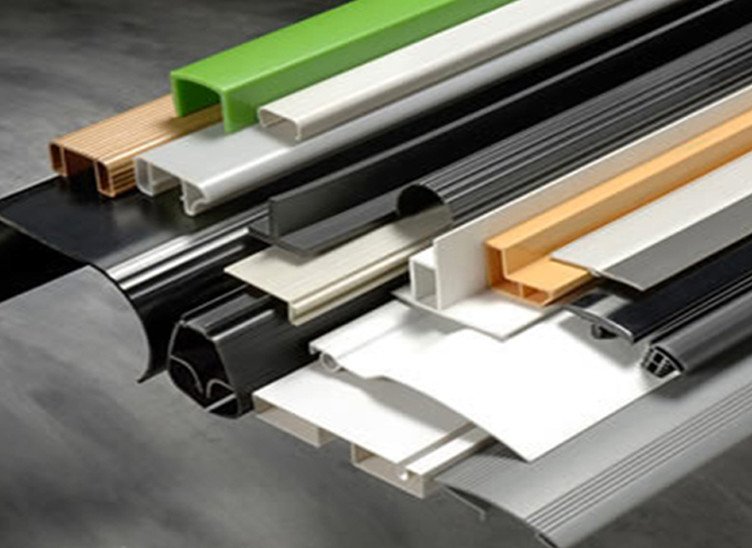
Different Plastic Extrusion Techniques
Plastic extrusion is a high-volume manufacturing process that involves pushing melted plastic through a die so that the plastic takes on a new shape. This process can create a wide range of plastic products with various shapes, profiles, sizes, and properties. It is also highly customizable and cost-effective, making it a good option for large-scale production runs and custom projects. There are multiple plastic extrusion techniques used for different applications, including:
Co-extrusion
Co-extrusion combines two materials with different properties into a single cross-section. The process uses two extruders to extrude multiple layers of material simultaneously. These extruders can be set to different speeds and sizes to alter the layer thicknesses. Our manufacturers use co-extrusion to produce products with various performance characteristics, including enhanced durability and strength.
Clark Rubber and Plastic can also complete projects that require tri-extrusion. Tri-exclusion is similar to co-extrusion but uses three extruders and separate materials. This allows our manufacturers to customize your product to your desired specifications.
Tubing Extrusion
We use tubing extrusion to produce plastic tubes and pipes with uniform dimensions and properties. This process often requires the extruder to push a positive internal pressure throughout the plastic to create a hollow core. Tubing extrusion can create pipes for medical devices and plumbing applications because it produces tubes with precise tolerances, smooth surfaces, and consistent quality.
Blow Film Extrusion
Our manufacturers use blow film extrusion to produce thin plastic films with uniform thickness, such as shopping bags and food packaging. The melted plastic is extruded through a circular die to create a tube during the extrusion process. The machine then uses air pressure to inflate the tube to the desired size and thickness. We can customize these specifications to fit the diverse needs of various industries and applications.
Sheet Extrusion
The sheet/film extrusion method produces flat plastic sheets of varying thicknesses. It may be used to produce plastic films or sheets that are too thick to be made with blow film extrusion. During extrusion, molten plastic is extruded through a flat die, which is then cooled to form a continuous sheet. Sometimes, the sheets go through a series of cooling rolls, which can control sheet thickness. We use these sheets to create various products, including signs or packaging materials.
Over-Jacketing Extrusion
Our manufacturers use over-jacketing extrusion to apply an additional protective coating to something, most often a cable or wire. In this method, the machine extrudes a layer of melted plastic material over the surface of the cable. This helps provide enhanced insulation and durability, increasing the wire’s reliability and safety.
Contact Clark Rubber and Plastic for Plastic Extrusion Services
Plastic extrusion creates plastic products with precision and efficiency. Each technique is better suited for different applications and has unique advantages. Clark Rubber and Plastic has expanded its plastic capacity to accommodate multiple projects using different extrusion techniques. We work with you to understand your project’s demands so we can recommend materials and design options. We have experience with many industries, including solar, appliances, automotive, and more. Contact us today to learn more about our services.
